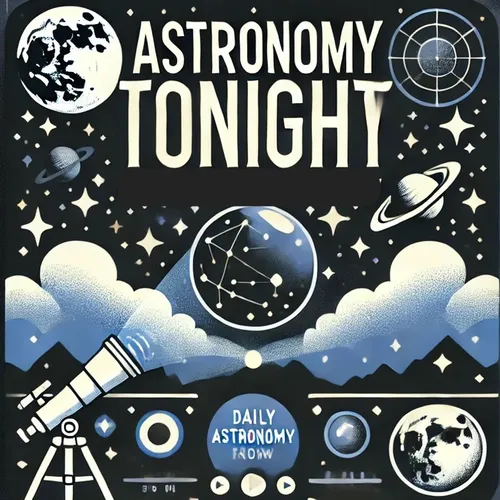Astronomy Tonight for - 10-17-2024
- Author
- Inception Point Ai
- Published
- Thu 17 Oct 2024
- Episode Link
- https://www.spreaker.com/episode/astronomy-tonight-for-10-17-2024--62395540
Ah, October 17th! Let's take a cosmic journey back to 1604, when the night sky put on a dazzling show that had astronomers of the time scratching their heads and scribbling furiously in their observation journals.
On this very date in 1604, German astronomer Johannes Kepler first observed what would later be known as Kepler's Supernova (also called SN 1604). This celestial firework was the last supernova to be observed in our Milky Way galaxy with the naked eye, and boy, was it a spectacle!
Picture this: Kepler, with his distinctive mustache quivering with excitement, peers up at the night sky. Suddenly, his eyes widen as he spots a blindingly bright new star in the constellation Ophiuchus. "Mein Gott!" he probably exclaimed, "What is this celestial intruder?"
Little did Kepler know that he was witnessing the death throes of a massive star, exploding in a brilliant supernova that outshone all the stars around it. This cosmic explosion was so bright that it was visible during the day for over three weeks. Talk about stealing the show!
Kepler, being the meticulous observer he was, tracked this mysterious object for an entire year. He even wrote a book about it called "De Stella Nova in Pede Serpentarii" (On the New Star in the Foot of the Serpent Handler). Imagine the book tour for that tongue-twister!
This supernova observation was a big deal for astronomy. It helped challenge the long-held belief that the heavens were unchanging and perfect. Turns out, even stars have their dramatic moments!
Today, we can still see the remnants of this explosion as a beautiful nebula, expanding at about 4 million miles per hour. It's like a 420-year-old cosmic firework that's still going strong.
So next time you look up at the night sky on October 17th, give a nod to Kepler and his supernova. Who knows, maybe you'll spot the next big celestial event... just don't forget your telescope!
This content was created in partnership and with the help of Artificial Intelligence AI
